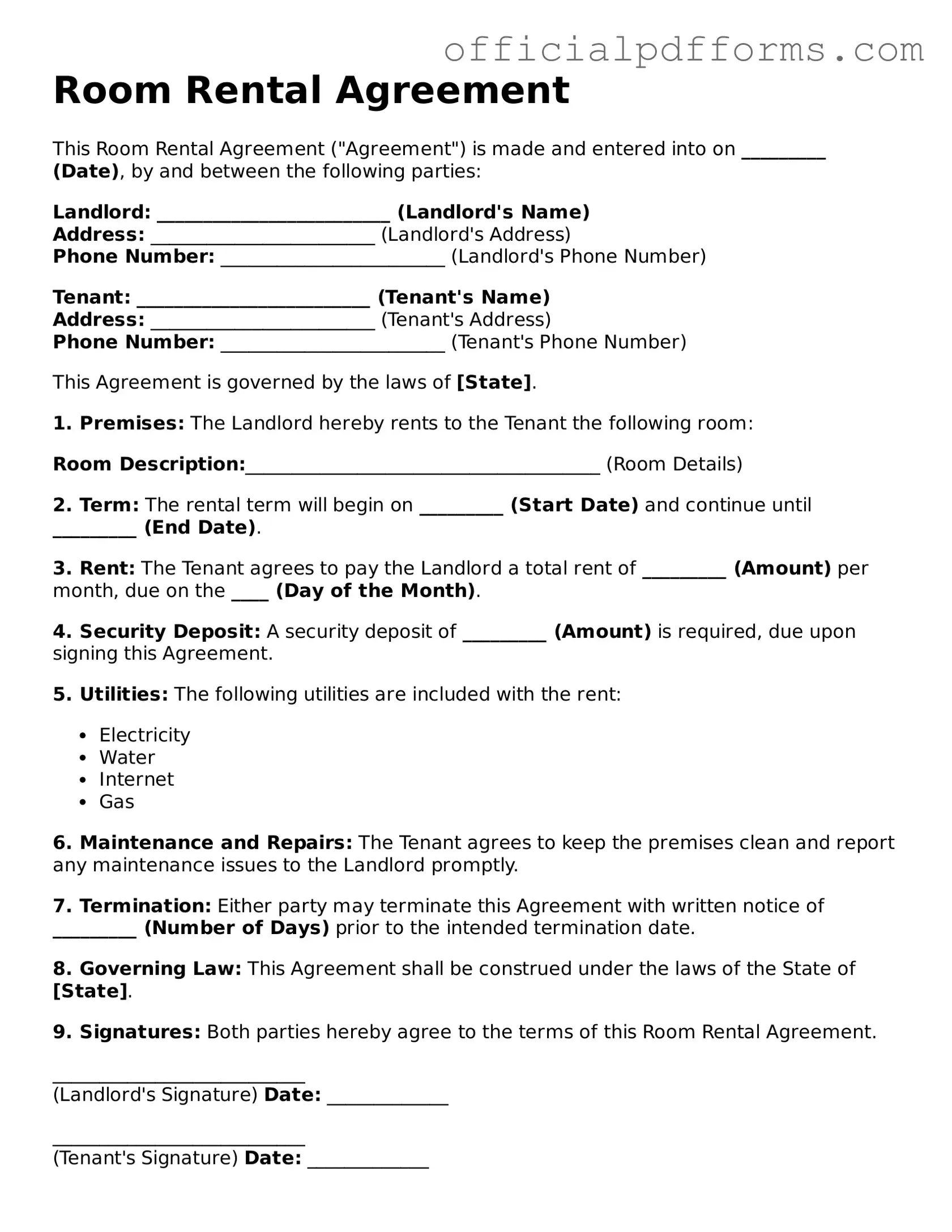What is a Room Rental Agreement?
A Room Rental Agreement is a legal document that outlines the terms and conditions under which a room is rented from a landlord or property owner. It serves to protect both the tenant and the landlord by clearly stating the responsibilities and rights of each party. This agreement typically includes details such as the rental amount, duration of the lease, and rules regarding the use of the property.
Why is it important to have a Room Rental Agreement?
Having a Room Rental Agreement is crucial for several reasons. It provides clarity and helps prevent misunderstandings between the tenant and the landlord. By outlining specific terms, both parties can refer back to the agreement in case of disputes. Additionally, it can serve as evidence in legal matters, should they arise.
What key elements should be included in a Room Rental Agreement?
When drafting a Room Rental Agreement, consider including the following key elements:
-
Names of the parties:
Include the full names of both the landlord and tenant.
-
Property description:
Clearly describe the room being rented and any shared areas.
-
Rental terms:
Specify the rental amount, payment due dates, and acceptable payment methods.
-
Duration of the lease:
Indicate whether the agreement is for a fixed term or month-to-month.
-
Security deposit:
State the amount required, conditions for its return, and how it will be held.
-
Rules and regulations:
Outline any house rules, including noise restrictions and guest policies.
-
Termination conditions:
Describe the process for ending the agreement, including notice periods.
Can a Room Rental Agreement be modified after it is signed?
Yes, a Room Rental Agreement can be modified after it is signed, but both parties must agree to the changes. It is advisable to document any modifications in writing and have both parties sign the updated agreement. This helps ensure that everyone is on the same page and can prevent future disputes.
What happens if a tenant does not pay rent on time?
If a tenant fails to pay rent on time, the landlord may have specific procedures outlined in the Room Rental Agreement. Typically, the landlord may issue a late notice, which provides the tenant with a grace period to pay the overdue rent. If payment is not made, the landlord may initiate further action, which could include termination of the rental agreement or eviction proceedings, depending on state laws.
Is it necessary to have a witness when signing a Room Rental Agreement?
While it is not always required to have a witness present when signing a Room Rental Agreement, having one can add an extra layer of protection. A witness can verify that both parties willingly entered into the agreement and can provide testimony if disputes arise later. It's a good practice, especially for longer-term agreements.
What should a tenant do if they want to break the lease early?
If a tenant wishes to break the lease early, they should first review the terms outlined in the Room Rental Agreement. Many agreements include specific clauses regarding early termination. The tenant should communicate their intentions to the landlord as soon as possible and may need to negotiate terms, such as paying a fee or finding a replacement tenant.
Are there any legal protections for tenants in a Room Rental Agreement?
Yes, tenants have legal protections that vary by state. Generally, laws protect tenants from unfair eviction practices and require landlords to maintain safe and habitable living conditions. Tenants should familiarize themselves with local housing laws to understand their rights and responsibilities fully. Seeking advice from a legal professional can also provide clarity on specific situations.
How can a tenant ensure their rights are protected in a Room Rental Agreement?
To ensure their rights are protected, tenants should carefully read and understand the Room Rental Agreement before signing. It is advisable to ask questions about any unclear terms and request changes if necessary. Keeping a copy of the signed agreement and documenting any communication with the landlord can also help protect a tenant's rights throughout the rental period.
